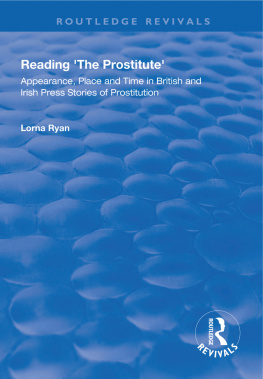I have an uncle who lives all alone in a small town in Eastern Idaho. And by small, I mean a population of fewer than 300 people.
Hes a reclusive man who would much rather spend time with his dogs and his birds (hes a falconer) than people. In fact, up until this year, the two of us had probably spent fewer than ten total minutes in conversation together.
When it became apparent that my grandmother wasnt going to be with us much longer, my uncle realized he needed to prepare and purchase a suit for her funeral. Knowing that I worked in the industry and having gotten frustrated with the solutions he could find on his own, he reached out to see what I could do for him.
Hed spent a few weeks in various stores but all the suits he was presented with were too shiny. They didnt look like something hed wear, made him feel inauthentic, and were making a difficult time even more frustrating for him.
I had my suspicions and, after diving a little deeper with him, I determined a charcoal flannel suit was the best solution. It was serious enough for a funeral, but the traditional outdoor use of flannel also made it rugged enough to be consistent with my uncle and his lifestyle. It was a small win and by no means negated the loss of his mother, but it did help free him up to focus on her, rather than feeling self-conscious about how he looked during her funeral services.
As a thank-you gift for helping him out, he brought me a recently published photo book of the city of Rexburg, Idaho - the town in which he, my mom, and their siblings grew up. In it were a few photos of my various extended family and other shots of different historical sites and important figures in the towns history.
I started to thumb through the book and was quickly drawn in by the clothing of the men. Some photos were from the 19th century, others were during World War II, and there were even some from the early 21st century.
As I was looking at one particular page of war veterans returning home in their uniforms in the 1940s I made the comment of how muchI loved the discipline, honor, and diligence that these men exemplified and was demonstrated through their uniforms. The clothes were neatly pressed, fit well, and made them look like dignified war heroes.
My uncle chuckled wryly and said, Those uniforms hid their lack of those virtues as often as they projected them.
It was a sobering thought. I didnt know the men on these pages. I just saw what they wanted me to see - dignity, discipline, courage, strength - whereas my uncle had spent time growing up around them. He saw things like anger, drunkenness, vice, and weakness.
Power has an appearance and appearance has power. Ideally those two would line up together and the world would be full of good, masculine men who dress and look like good masculine men.
But all too often reality is something different. There are good men and strong leaders out there who dress and look like children or bums. There are awful, lazy men who dress in a way that hides their vices from those around them and makes them appear better than they truly are.
In an attempt to correct these disparities, our current culture tries to rob both appearance of its power and power of its appearance - to say that the way a person dresses or looks doesnt - or at least shouldnt matter.
Were given platitudes like, dont judge a book by its cover and theres a often a cultural rush to prove ourselves as non-judgmental as we can.
But, a mans appearance has been an integral part of humanity since before the dawn of civilization. As human beings we use mental shortcuts when assessing our surroundings and the people within them. It is inefficient and dangerous to treat every object, scenario, and person as a blank slate or an unknown.
And, because it is our tendency to judge according to visual stimuli, we use physicality, body language, grooming, and clothing to quickly and effectively communicate who we are and how we want to be perceived.
Some men dress to appear more physically threatening, others to convey status and power within social spheres, some attempt to fit in and not draw attention to themselves, and others use their clothing to show their disdain for the social norms around them.
Regardless of what your intentions are, your clothing says something about you. And no, this doesnt just apply to you, but to every man who has ever interacted with another human being. From the ancient shaman, to the Wall Street banker, the Pope to the gutter punk, all men use clothing and appearance to tell the world who we are. Which means its worthwhile for you to understand how to use this tool effectively.
This book is not for the guy whos simply looking for an outfit that will help him get laid, nor is it for the man who wants to know the one perfect thing he can wear to nail his job interview.
While it does contain accurate advice, there are no lists ofparticular items you need to have in your closet, tutorials on how to tie a tie, or breakdowns of why one pair of boots costs $50 and another can be $5000.
Instead, the purpose of this book is to outline the underlying principles of how clothing affects men and masculinity. Understanding and applying those principles will take you far beyond looking like youve been dressed by an image consultant, in one of his five variations ofacceptable clothing, and into the realm of being well-dressed all the time.
The ultimate goal of your appearance is to use aesthetics as one ofmay means to help accomplish your desired ends. Are you trying to find and marry the perfect woman? Clothing wont do it for you, but it can help. On the other hand, if used poorly, your clothing can hinder that pursuit. What about establishing yourself within your career, getting in better shape, making better friends, or any other improvement most of us are interested in? Clothing doesnt do all the heavy lifting, thats still up to you. But it can supplement or counter your other efforts to make yourselfa better man.
The key to dressing well is establishing a wardrobe that is consistent with both your realities and your aspirations.
Perhaps youre the kind of man who is content to dress solely in a way that reflects who you are. Do people expect more of you? Do they treat you any better this year than the year prior? Do they help you as you aspire and work to be better or try to convince you that any change you make to your life will either be temporary or not worth it? When people dont see physical evidence of our aspirations, its easy for them to treat us like they always have and to believe we dont expect anything better of ourselves.
Or, maybe you merely dress to impress but feel as though, if others knew the truth, theyd see you as a fraud - someone without integrity, honesty, or consistency - at least between the appearance you present to the world and the man you truly are. When people dont see any congruence between the person we advertise ourselves to be and who we really are, they believe us to be dishonest, disingenuous, and untrustworthy.





